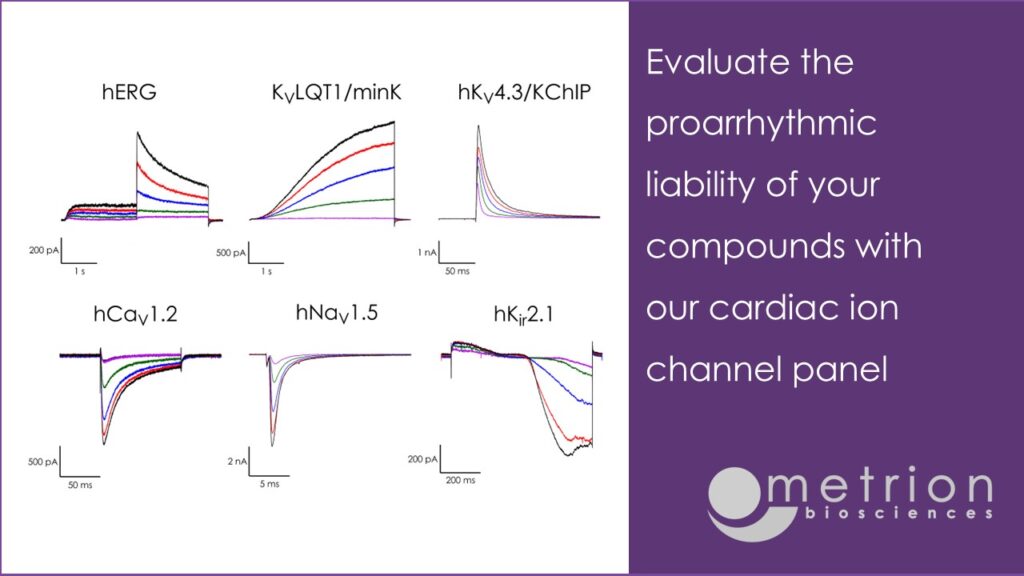Aligos Therapeutics and Metrion explore key approaches to cardiovascular safety screening in drug discovery.

Improve efficiency, reduce late-stage failures, and align with regulatory standards by assessing the proarrhythmic liability of your compounds early. The potency data derived from high-fidelity platforms such as automated patch-clamp and the gold standard manual patch-clamp technique, is suitable for use in in silico action potential models. Our full cardiac ion channel panel includes: hERG (including a robust, dynamic hERG assay), KVLQT1/mink, hKV4.3/KChIP, hCaV1.2, hNaV1.5 (peak and late), hKIR2.1. Screening services against hHCN4 and hKV1.5, which play important roles in controlling human heart rate and atrial repolarisation, respectively, are also provided.
Learn more about our cardiac ion channel panel.
Aligos Therapeutics and Metrion explore key approaches to cardiovascular safety screening in drug discovery.
We developed a high-throughput, electrophysiological assay of TREK-1 function to identify novel modulators. The assay was optimized to identify both activators and inhibitors, providing comprehensive mechanistic data for high value, limited supply screening libraries, such as the venom fraction library used in this study (Targeted Venom Discovery Array, T-VDA, Venomtech, UK).